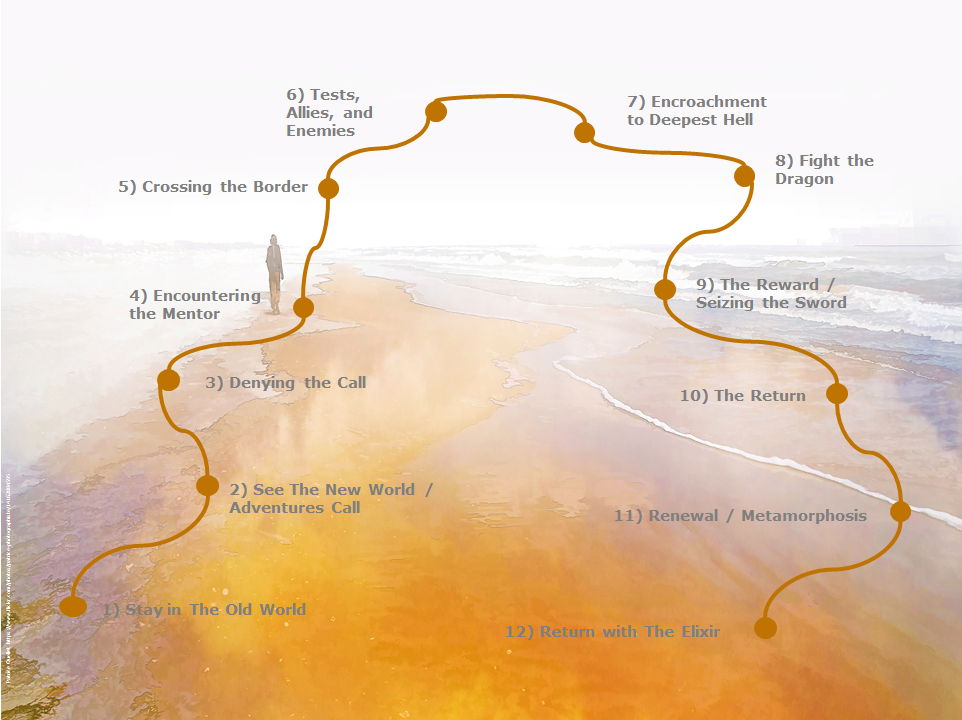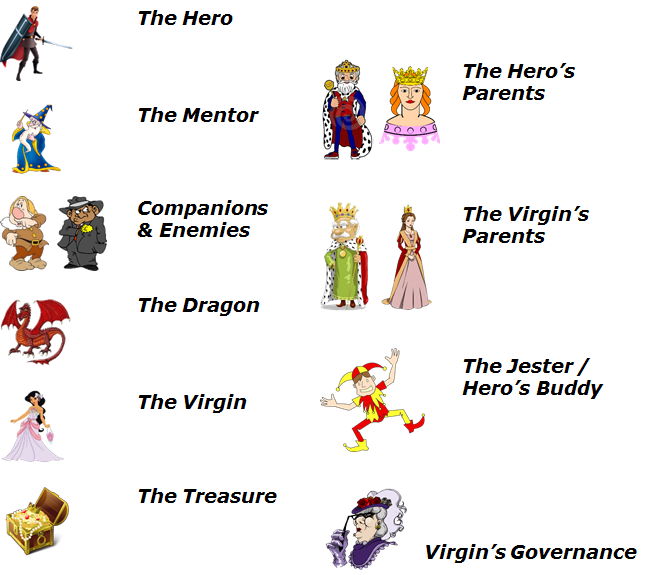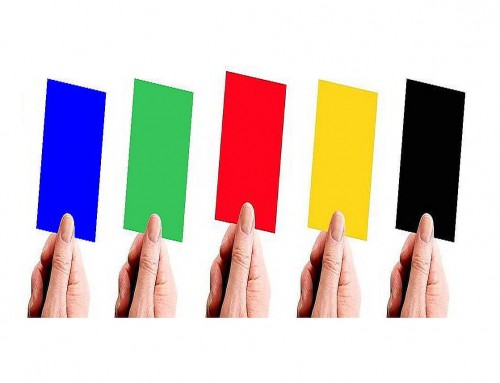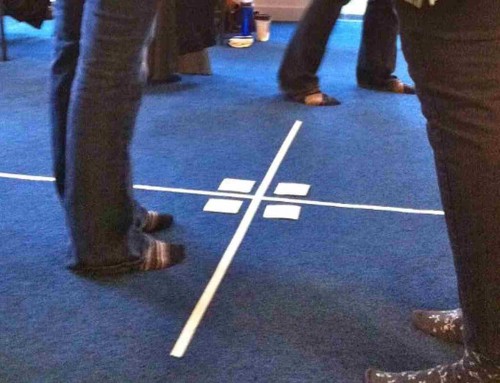"Drama Babe – Open your Customer’s Drama Stage"
Engage with Telling a Story
For marketing departments, business analysts, and content or brand strategy visionarists is storytelling today a way to tie intensively customers and stakeholders to their brand or product.
Even if you are not a dedicated fan and follower of storytelling, you can not deny its emotional power: storytelling is great to affect and connect people by heart. Your 5 years old kid won't ask you: "Daddy, please tell me the content of Goldilock" — instead, she would ask "Daddy, please, tell me the fairy tale of Goldilock".
We store stories in our long-term memory. For a very long time... a really veeeery long time. Even at the age of 50, I still remember my father sitting at bed-time on my bed and telling my a story he created on the fly composed with characters made out of his family: by grandpa, my grandma, my mother, he himself, and my early died uncle Arthur. All these stories started: "When I and your uncle Arthur were little kids...". Even if my father embellished his and my uncle's role in all these stories, only due to these narratives, I got a certain conception of my uncle Arthur today — whom I never met since my uncle died before I was born.
Thus, for now, lets accept as a minimal consensus
Stories do have an affect: they connect people emotionally.
There are several more aspects regarding to stories and fairy tales. Fairy tales help us to answer basic existential questions, like "Who am I?", "What is good life?", "Where do I belong?"
Through fairy tales we learn to navigate reality and survive in a world full of ambiguities and dangers.
And this applies to business environments as well. The only difference is: the intended audience are no kids — instead leaders, employees, customers, and stakeholder!
Therefor, the the sentence above implies:
Storytelling ties customers to your brand and to your product by heart.
"Drama Babe – Open your Customer’s Drama Stage" – Set Your Customer or Employees into their Hero Role
Find engaging and appealing characters to which one can relate easily.
Finally, tell your story with pathos and emotions!" margin_top="" margin_bottom="" animation_type="" animation_direction="" animation_speed="" class="" id=""][/fusion_fusion_tagline_box]
- archetypical story structure: "Drama Bow"
- archetypical story protagonists: "Role Descriptions"
Drama Bow & Archetypes — The Architecture of Stories
Comparative mythology and literary studies showed that all stories told in mankind at all countries and in all eras have two commonalities: they follow a equal dramatic structure; and they have an comparable set of characters. This holds for ancient tribe or shaman tales told to nowadays stories narrated. Almost all stories are made of three basic components:
- Setting: The stories talk about a current state or a situation.
- Conflict, Challenge, Quest: Then there is a conflict that is introduced in the situation
- Resolution: The rest of the story is about the resolution of that conflict.
This dramatic, narrative structure is the so called "Drama Bow":
“Drama Bow”
- The Setting: The hero is suddenly forced to leave his acquainted setting he lived in (“Old World”). He is missing something.
- The Quest: To find the missing link the Hero goes on a journey.
- He stands challenges, adventures, meets his mentor and makes new friends.
- He gains honour, wealth and the virgin.
- The Resolution: When returning the Hero changes the “old world” with his new experiences and values.
- The Hero. He survives Adventures, fights with Dragons, finds new Friends, and rescues the Virgin.
- The Mentor. The Mentor teaches, facilitates, and guides the Hero during the Quest.
- Companions & Enemies. During the Quest the Hero differentiates between New Companions and Enemies.
- The Dragon. The Hero has to stand several challenges and Fights – the next more dangerous than the previous. The Dragon is the metaphor for the Final Fight, a life-or-death Struggle – All or Nothing.
- The Virgin. The Virgin, or The Princess, stands for the Happiness and Luck the Hero could achieve.
- The Treasure. The Treasure is the metaphor for all Experiences, Learnings, Values and Norms the Hero meets at his Quest.
- The Hero’s Parents. The Hero’s Parents are a metaphor for all what the “Old World” represents: old Values, and old Norms. The Old World holds the Hero back, and shows Resistance to the New – the Change.
- The Virgin’s Parents. The Virgin’s Parents are a metaphor for all what the “New World” represents: new Values, and new Norms. And the New World has Resistance as well – they want to keep and hide their Values.
- The Jester / Hero’s Buddy. The Hero’s oldest pal, they know each other since the flask. The Jester takes nothing serious, he replies everything with a joke, he is open minded, and he pushes The Hero to go for the New again and again.
- Virgin’s Governance. The Governance is the “Internal Guard” of The Virgin. She keeps the Values and Norms of The New World up and holds The Virgin back to love The Hero too early.
How to Create a Story Well
Define the Story and Keep it Simple.
What is the essential story you want to tell? What is the information you want to share? — Every story we tell must have an objective. This objective defines the story line. Cut any extraneous fact or detail that doesn’t serve that objective. Thus, go straight into the story and do not ramble for a long time to setup context or to tell the past. Do not introduce too many characters as necessarily needed to pace the story line. Keep the story line slim: do not introduce too many branches and loops into your story. Question every detail. Eliminate the interesting, but not mission-critical. Cut all irrelevant data: names, dates and numbers. Get rid of the clutter and keep the story moving forward.
Characters Count
Information are no stories. Processes, or working descriptions are no stories. Technical equipment are no stories as well. No audience cares about this junk.
The audience cares about people, instead. — As a storyteller your number one job is to find characters resonating with your audience. When finding your characters, sit yourself in the seat of the audience: sketch your characters in way the audience can connect to them. The characters must resonate with your audience, not vice versa!
Start by thinking of your audience’s big challenges. What’s stopping them from achieving their goals? Find a character who’s overcome those obstacles.
Tell your Story like a James Bond Movie.
To create your story follow this mantra: "Boom! - yeah, Yeah, YEAH - BOOM!!"
- Start the story with an impressive intro scene: Boom!
- Arrange the following highlights in ascending order of power to build the interest: yeah Yeah
- End your story with a gigantic BOOM!
Research all Relevant Available Information and put it into Metaphors.
With every story you start a conversation, with yourselves as well as with others. With your stories you want to communicate. You always communicate with stories. You argue via stories, internally or out loud. You talk back. You praise and you blackmail or denounce with stories.
With your story you want to share a message. You want to give the audience a promotion. You want to give the audience some learnings. — Research the data and facts you need to create your story line and to satisfy your story's objectives.
Line all data in ascending order of necessity to tell and of audience's interest. Transform them into metaphors, thrilling actions and events, and attributes of your protagonists.
Establish Checkpoints to Connect.
Identify parts in your story to which your audience may relate and connect easily or best. Embellish and decorate these points. Go into details of the thoughts of the characters, their emotions, and mental states. Paint in detail the ambiance and environment your characters are faced with: space, time/era, architecture, nature, etc.
Hero Quest! – “The Drama Game”
Tell your brand as a compelling story. Tell your product development as a compelling story. Motivate your employees with being part of this story. Engage your stakeholders with playing a character in this story. Involve your customers and clients with being a protagonist in this story.

Hero Quest! – “The Drama Game” is a storytelling game to identify, reflect, hidden expectations and behaviours in certain situations of team members, stakeholders, and other participants of a product development process. Playing the game creates a shared understandings of the reasons of events and incidents happened in the product development life cycle.
The roles of king, queen, prince, princess, dragon, wizard and others are avatars for the challenges your customers, stakeholders, and employees face in the real world. At the same time, the events happening in the world of fairy tales are metaphors for what takes place in real organisations: succession issues, challenges, flashy conventions and glittering prizes, battles to be fought with competitors, etc.
You play the game in so called retrospectives, with all parties involved in these incidents. Retrospectives are joint sessions with all involved participants to identify what went good, what should be kept, and what should be improved for a certain development time frame.
- As a team, the players correlate the real incidents to the symbolic quest marks shown at the story board.
To prioritisation you can use any criteria you consider as useful for your project/product: importance, for product development, value for the business or customer, risk or danger for your business or organisation. However, use the criteria for all incidents in a consistent way.
Note: not necessarily all quest marks must be covered; and multiple incidents can be mapped to one quest mark. - Each participant tries to remember individually for each incident what he personally heard, what he personally said himself, and how he personally felt.
Time box this exercise and use the innovation game empathy maps as support. - According to the patterns the team will recognise, the teams identify which participant played which archetypal role: who is the her, who the dragon. You can mark this colored pins.
Note: multiple participants can play the same role for a certain incident; and during the game the roles may change: who was mentor/wizard in a previous incident, can become an enemy in the current incident. - When you assign colored ropes or strings to each player you can map how the protagonists changes roles.
- Take the data and insights of steps 3, 4 for discussion and debriefing.
For more information on "The Drama Game" see: http://bit.ly/TheDramaGame.
: Flickr.com, .








Leave A Comment